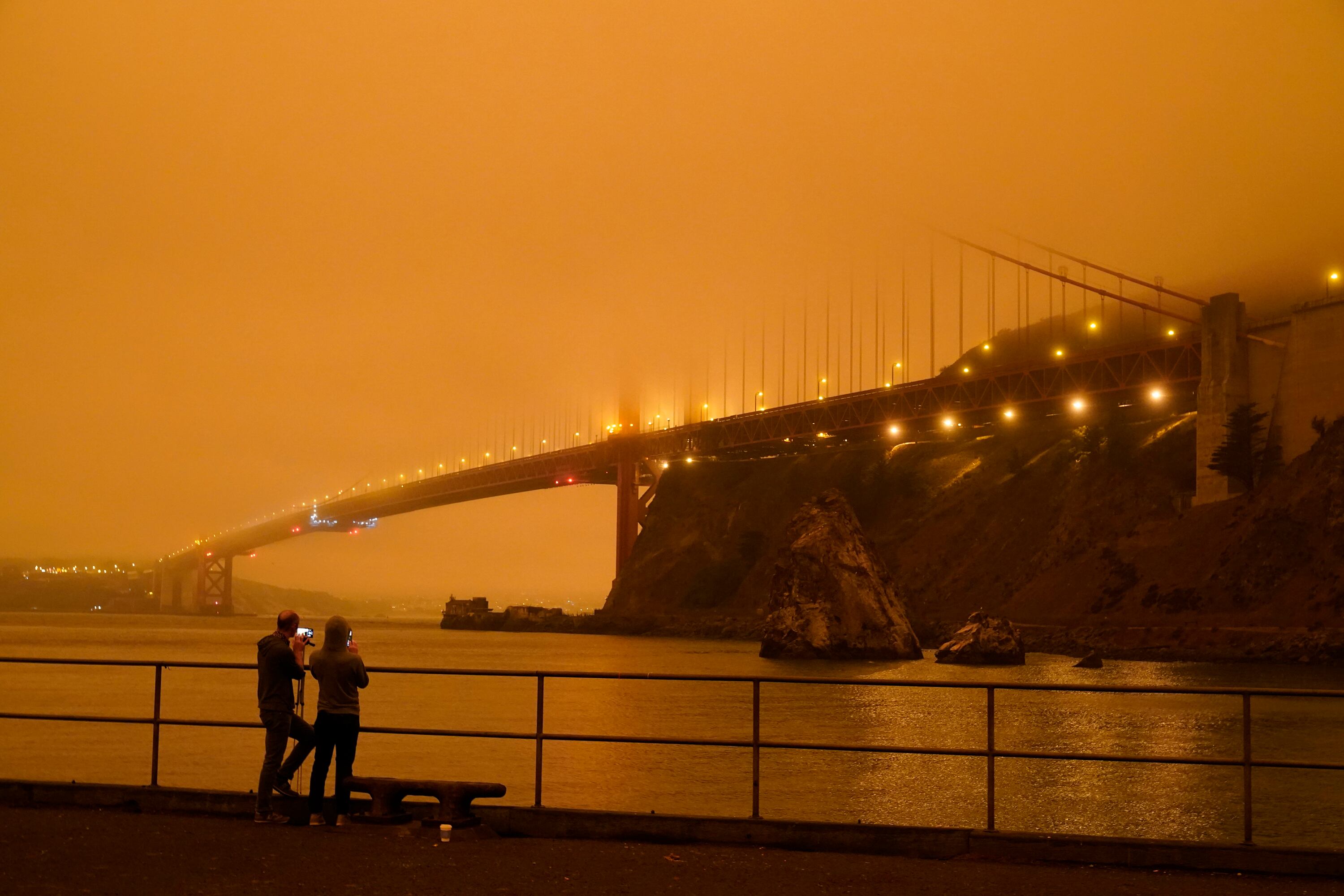By Marcio Jose Sanchez and Brian Melley
Wildfires raged unchecked across parts of the western U.S. on Wednesday amid gusty and dry conditions, but forecasters said some weather relief was in sight that could help firefighters overwhelmed by the blazes.
In California, winds stoked unprecedented numbers of fires that have forced rescues and evacuations. In Washington, more acres burned in a single day than firefighters usually see all year. Fires also forced people to flee in Oregon and Idaho.
A temperature plunge of as much as 60 degrees (15 Celsius), caused by a dramatic intrusion of polar air, helped slow wildfires in Colorado and Montana.
"The significantly colder airmass is helping reduce critical fire conditions across the West, however most of West coastline and adjacent counties have Red Flag warnings in effect for part of today," the National Weather Service said. A warning is issued when conditions combine to produce an increased risk of fire danger.
Diminishing winds were possible by Thursday, "bringing some relief to the ongoing fires and fire weather threat," forecasters said.
A massive cloud of smoke covered much of California on Wednesday, dimming the sun to an eerie orange glow over San Francisco.
About 125 miles (200 kilometers) to the northeast, winds fanned a huge fire in the Sierra Nevada foothills and forced authorities to order early morning evacuations and warn other residents to be ready to leave.
The area is not far from the town of Paradise, where 85 people were killed by a fire two years ago, and Oroville Dam, where failing spillways forced a massive evacuation in 2017.
On Tuesday, flames overtook 14 firefighters who had to deploy last-resort emergency shelters and destroyed a fire station in Los Padres National Forest on California's central coast. They suffered burns and smoke inhalation, and three were flown to a hospital in Fresno, the U.S. Forest Service said.
Chris Barth, a spokesman on the Dolan Fire, said the three hospitalized firefighters were stabilized, with one in critical and the other two in fair condition. Barth said the firefighters' training and equipment had prevented a worse disaster.
Helicopters have been used in recent days to rescue hundreds of people stranded in the burning Sierra National Forest, where a fire has destroyed 365 buildings, including at least 45 homes. About 5,000 buildings were threatened, fire officials said.
Flames threatened the foothill community of Auberry between Shaver Lake and Fresno.
In Southern California, fires burned in Los Angeles, San Bernardino, and San Diego counties. People in foothill communities east of Los Angeles were warned to be ready to flee, but the region's notorious Santa Ana winds were weaker than predicted.
"We're encouraged that the wind activity appears to be dying down," Gov. Gavin Newsom said. "The rest of the week looks a little more favorable."
After closing eight national forests in the southern half of the state earlier in the week, the U.S. Forest Service closed California's 10 other national forests, citing "unprecedented and historic fire conditions throughout the state."
California has set a record with nearly 2.3 million acres (930,800 hectares) burned already this year, and historically the worst of the wildfire season doesn't begin until fall.
Pacific Gas & Electric was deploying more than 3,000 employees Wednesday to inspect power lines before restoring energy to about 167,000 customers whose electricity was turned off to prevent fires from being started by wind-damaged wires. Some aerial inspections were paused because of smoke limiting visibility, said spokesman Jeff Smith.
Only a very small number of customers had power turned off in Southern California.
In the Sierra National Forest east of Fresno, dozens of campers and hikers were stranded at the Vermilion Valley Resort after the only road in — a narrow route snaking along a steep cliff — was closed Sunday because of the so-called Creek Fire.
"This is emblematic of how fast that fire was moving, plus the physical geography of that environment with one road in and one road out," said Char Miller, a professor of environmental analysis at Pomona College, said of the helicopter rescues. "Unless you wanted an absolute human disaster, you had to move fast."
Numerous studies in recent years have linked bigger wildfires to global warming.
"The frequency of extreme wild fire weather has doubled in California over the past four decades, with the main driver being the effect of rising temperature on dry fuels, meaning that the fuel loads are now frequently at record or near-record levels when ignition occurs and when strong winds blow," Stanford University climate scientist Noah Diffenbaugh said in an email.
___
Melley reported from Los Angeles. Associated Press writers Christopher Weber, Frank Baker, and John Antczak in Los Angeles, Olga Rodriguez and Juliet Williams in San Francisco, Adam Beam in Sacramento, and Seth Borenstein in Washington contributed to this report.









